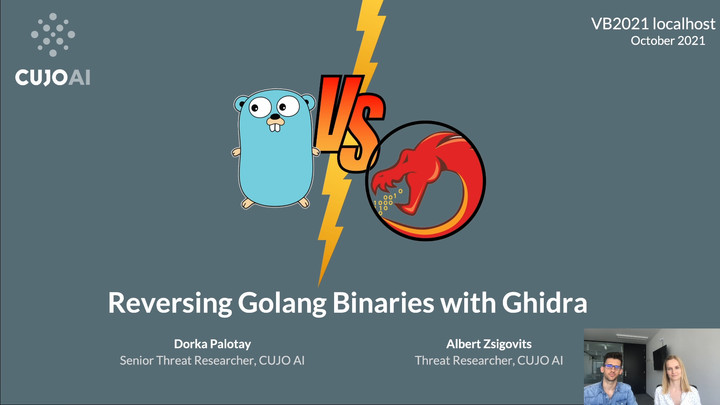Reversing Go binaries with Ghidra


Downloads

Dorka Palotay
CUJO AIDorka has a Bachelor’s degree in applied mathematics. She continued her studies in the field of security and privacy, where she gained her Master’s degree in computer science specialising in advanced cryptography. She started her career at Sophos, mainly focusing on ransomware analysis, but as a member of the Emerging Threats team she had the opportunity to gain experience in reverse engineering a wide range of malware attacks. Before joining CUJO AI she was working in the financial industry as an IT security analyst, focusing on threat hunting and forensics investigations. Currently she is working at CUJO AI as a senior threat researcher focusing on reverse engineering IoT malware. She is also a guest lecturer at ELTE Informatics faculty, where she teaches malware analysis to IT security students.

Albert Zsigovits
CUJO AIAlbert works as an IoT malware researcher at CUJO AI. He started out as a traditional blue teamer early in his career, analysing security events as an IDS analyst, and later investigating breaches as a senior incident responder for a Fortune 50 company. Later, he joined a respected anti-virus company to deepen his knowledge of reverse engineering. His specialities include malware analysis, memory forensics and signature development. Albert is a former speaker at SEC-T, DisobeyFi and BSidesVienna.



 CTA TIPS
CTA TIPS  QI-ANXIN
QI-ANXIN 
